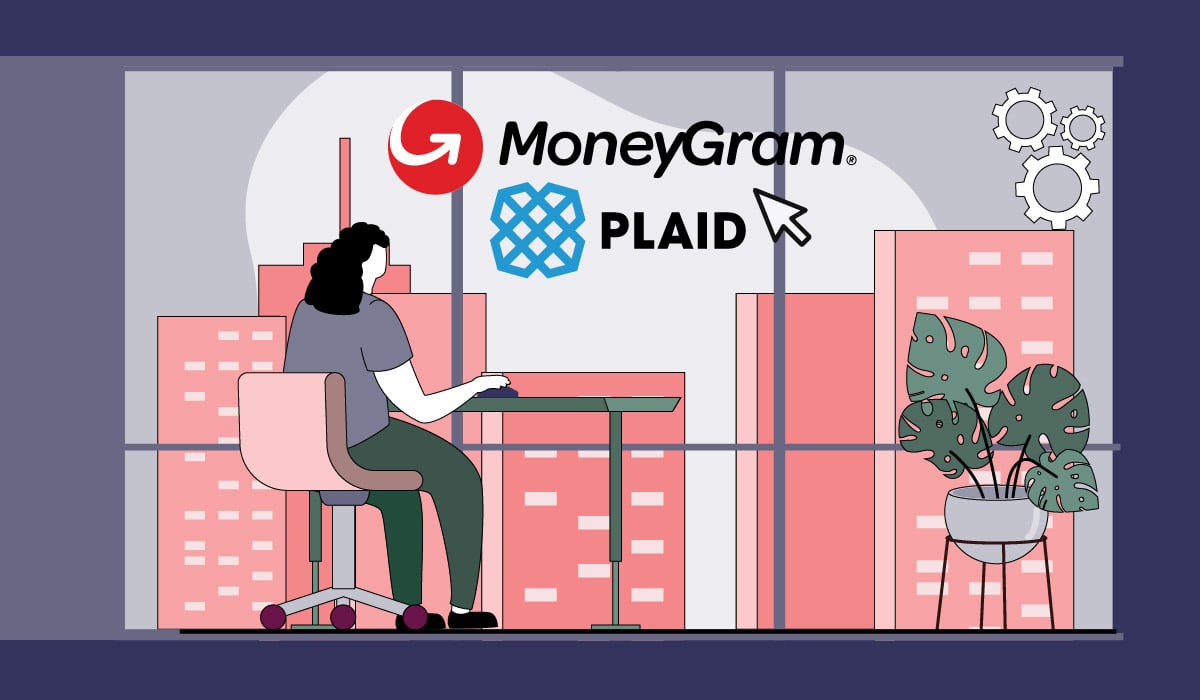The recent announcement of MoneyGram’s new Pay-by-Bank option, powered by Plaid, is more than a new payment method. It’s a signal. As financial institutions and fintechs alike seek to streamline the way money moves, the path of least resistance is beginning to look a lot like… your bank account.
By enabling U.S. customers to fund money transfers directly from their bank accounts using Plaid’s familiar, secure account-linking flow, MoneyGram is reducing both friction and fees in one move. It’s a powerful example of how the industry is working to collapse complexity in the payments journey.
Here’s what this moment reflects, and what it may foreshadow.
1. Direct-to-Bank Payments Are Going Mainstream
Consumers are increasingly willing (and eager) to bypass cards and wallets in favor of linking directly to their bank accounts, especially when the authentication experience is secure, seamless, and widely recognized, as it is with Plaid.
That’s a win for the payer, who avoids card fees and potential declines; a win for the payee, who gets a higher likelihood of settlement; and a win for the broader ecosystem, which benefits from reduced fraud risk and lower costs.
2. Orchestration Isn’t Always About Infrastructure — It’s About Intentionality
While this particular move is a feature integration rather than a backend orchestration play, the spirit of orchestration is alive and well. Offering Pay-by-Bank as an option within the funding experience gives customers meaningful choice, and puts control back in their hands.
Smart orchestration isn’t just plugging in more payment options. It’s about surfacing the right one at the right time, based on the context of the transaction, the needs of the user, and the economics of the moment.
3. Bank Authentication Is a Game-Changer for ACH
Not all ACH is created equal. The real advantage here isn’t just that MoneyGram is accepting bank debits — it’s that they’re doing it via a trusted authentication layer. That reduces payment failures due to NSF or outdated account info, and can even help prevent fraud.
Think of it this way: raw ACH is like taking the back roads to a destination. Authenticated ACH is the expressway, with signage, guardrails, and real-time insights along the way.
4. Cross-Border Flows Are Ripe for Simplification
While the Pay-by-Bank feature in this case applies to U.S. account holders funding international transfers, it opens the door for broader simplification of cross-border payment flows. If the funding side can become fast, low-cost, and reliable, the pressure shifts to the payout side to catch up.
Expect to see more moves in this direction as fintechs and money movement platforms look to harmonize global payment experiences.
5. Trust Converts
Let’s not overlook the customer experience dimension. Plaid’s interface is familiar to tens of millions of users. That familiarity translates into trust, and trust translates into conversion. When users don’t hesitate to link their bank account, the checkout funnel becomes a whole lot tighter.
As much as we talk about infrastructure, it’s the frontend experience that often makes or breaks a payment.
Final Thoughts
The MoneyGram-Plaid partnership may seem like a simple feature release, but it reflects a deeper shift in how payment journeys are being reshaped: simpler paths, smarter experiences, and more resilient outcomes for every participant in the flow.
As more companies look to re-architect their payment experiences, lessons like these will matter. Fewer hops. Better data. Smarter rails. Higher success. That’s where things are headed — and it’s a path worth watching.
